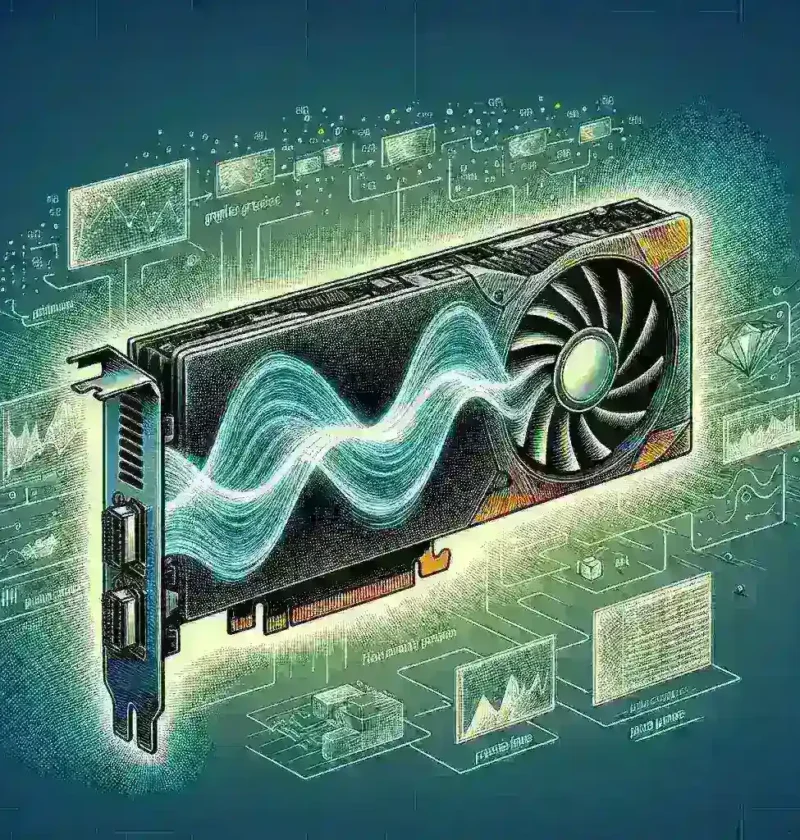Introduction
The gaming industry has always been at the forefront of technological advancements, and with each new generation of graphics cards, we witness innovations that redefined our gaming experiences. One such breakthrough that has recently emerged is the introduction of Smooth Motion frame generation technology, now available on NVIDIA’s RTX 40 series. This article delves into what this technology entails, its historical context, benefits, potential drawbacks, and what the future holds for this groundbreaking feature.
Understanding Smooth Motion Frame Generation
Smooth Motion frame generation is a cutting-edge technology designed to enhance the fluidity of motion in fast-paced games. By intelligently generating additional frames, this feature helps to minimize motion blur and stuttering, providing gamers with an exceptionally smooth experience. In essence, it creates a perception of higher frame rates, making even the most demanding titles run seamlessly.
The Technological Mechanics Behind It
At its core, Smooth Motion frame generation utilizes advanced algorithms that analyze the motion occurring on-screen. By predicting what the next frames should look like, the technology fills in the gaps, resulting in a greater number of frames per second (FPS) without demanding excessive computational resources. This means that even if a game is running at lower native frame rates, the experience remains fluid and engaging.
A Brief History of Frame Generation Technology
Before diving deeper into the implications of Smooth Motion, it is essential to understand the evolution of frame generation technologies. Early iterations of frame interpolation were rudimentary, often leading to unnatural motion artifacts. However, as GPU technology evolved, so did the sophistication of frame generation techniques.
With the launch of NVIDIA’s RTX series, including the RTX 20 and 30 series, we saw the introduction of real-time ray tracing and DLSS (Deep Learning Super Sampling). These innovations laid the groundwork for more advanced frame generation technologies, ultimately leading to the powerful capabilities now available in the RTX 40 series.
Benefits of Smooth Motion Frame Generation
- Enhanced Visual Experience: Gamers can enjoy smoother animations, reducing motion blur and improving clarity, especially in fast-paced games.
- Improved Performance: The technology allows gamers to experience higher FPS without requiring an upgrade to more powerful hardware, effectively maximizing the potential of existing systems.
- Reduced Input Latency: With optimized frame generation, players can experience more responsive controls, which is crucial in competitive gaming scenarios.
Real-World Applications
Several popular titles have already begun to leverage Smooth Motion frame generation, with games like Cyberpunk 2077 and Doom Eternal seeing significant improvements in visual performance. Players have reported a more immersive experience, with smoother transitions and reduced flickering, making gameplay much more enjoyable.
Potential Drawbacks
While the advantages are numerous, it’s essential to consider the potential drawbacks of Smooth Motion frame generation:
- Artifact Generation: Although the technology is advanced, some users report that it can occasionally produce artifacts, particularly in scenes with complex animations.
- Overreliance on Technology: Some gamers might become dependent on this feature, potentially overlooking other optimization techniques that could enhance performance.
User Experience and Feedback
Community feedback on the RTX 40 series and its Smooth Motion capabilities has generally been positive. Players appreciate the enhanced visuals and smoother gameplay. However, it is worth noting that experiences may vary based on individual systems and game settings, necessitating some fine-tuning for optimal performance.
Future Predictions for Frame Generation Technologies
As we look ahead, the future of frame generation technology appears promising. With advancements in AI and machine learning, we can expect even more sophisticated algorithms that will produce smoother frame generation with minimal artifacts. Additionally, as the gaming industry embraces 4K and VR technologies, the need for such enhancements will only grow.
Potential Innovations
Future iterations of the RTX series may incorporate even more features that enhance the Smooth Motion experience. For example, we may see:
- Improved algorithms for real-time frame generation.
- Integration with further advanced AI-driven enhancements that improve the game’s overall graphical fidelity.
- The combination of frame generation with ray tracing for unparalleled realism.
Conclusion
The introduction of Smooth Motion frame generation on the RTX 40 series marks a significant leap forward in gaming technology. By enhancing the fluidity of motion and maximizing performance without requiring additional hardware, NVIDIA has once again proven its commitment to pushing the boundaries of gaming graphics. As this technology continues to evolve, gamers can look forward to even more immersive and visually stunning experiences in the years to come.

